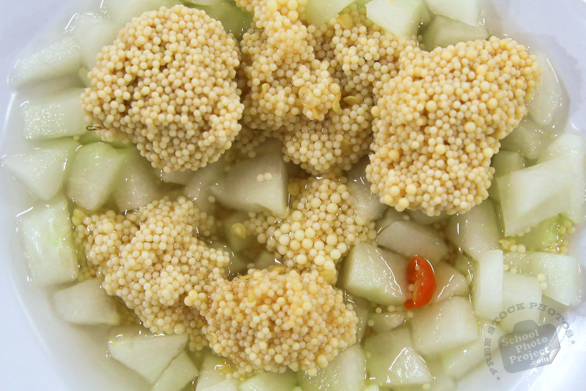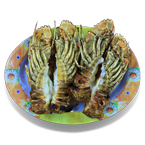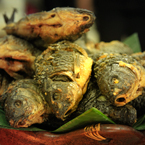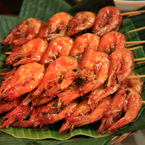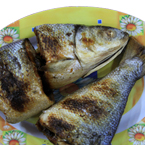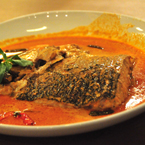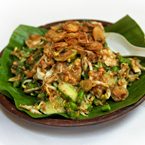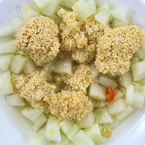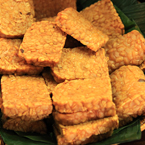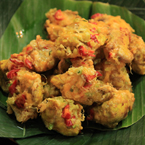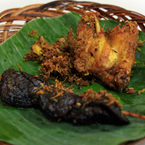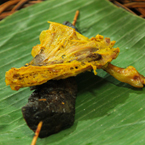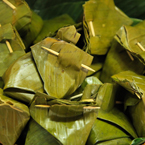Exocoetidae
(Flying Fish)
Exocoetidae, is a family of marine
fish in the order Beloniformes of class Actinopterygii.
Fish of this family are known as flying fish. There
are about 64 species grouped in seven to nine genera.
Flying fish live in all of the oceans, particularly
in tropical and warm subtropical waters. Their most
striking feature is their pectoral fins, which are
unusually large, and enable the fish to hide and
escape from predators by leaping out of the water
and flying through air a few feet above the water's
surface. Their flights are typically around 50 meters
(160 ft).
To glide upward out of the water, a flying fish
moves its tail up to 70 times per second. It then
spreads its pectoral fins and tilts them slightly
upward to provide lift. At the end of a glide, it
folds its pectoral fins to reenter the sea, or drops
its tail into the water to push against the water
to lift itself for another glide, possibly changing
direction. The curved profile of the "wing"
is comparable to the aerodynamic shape of a bird
wing.The fish is able to increase its time in the
air by flying straight into or at an angle to the
direction of updrafts created by a combination of
air and ocean currents.
Genus Exocoetus has one pair of fins and a streamlined
body to optimize for speed, while Cypselurus has
a flattened body and two pairs of fins which maximizes
its time in the air. From 1900 to the 1930s, flying
fish were studied as possible models used to develop
airplanes.
Exocoetidae feed mainly on plankton. Predators include
dolphins, tuna, marlin, birds, squids and porpoises.
Flying fish can use updrafts at the leading edge
of waves to cover distances of at least 400 m
(1,300 ft). They can travel at speeds of more
than 70 kilometres per hour (43 mph). Maximum
altitude is 6 m (20 ft) above the surface
of the sea. Some accounts have them landing on ships'
decks.
Flying fish are commercially fished in Japan, Vietnam
and China by the method of gillnetting, and in Indonesia
and India by dipnetting. In Japanese cuisine, the
fish is often preserved by drying. The roe of Cheilopogon
agoo, or Japanese flying fish, is used to make some
types of sushi, and is known as tobiko. It is also
a staple in the diet of the Tao people of Orchid
Island, Taiwan. Flying fish is part of Barbados'
national dish, known as cou-cou and flying fish.
In the Solomon Islands, they are caught while flying,
using nets held from outrigger canoes. They are
attracted to the light of torches. Fishing is done
only when there is no moonlight.
(Source: Wikipedia.org)
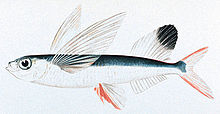
Sailfin Flying Fish (Source:
Wikipedia.org)
|






